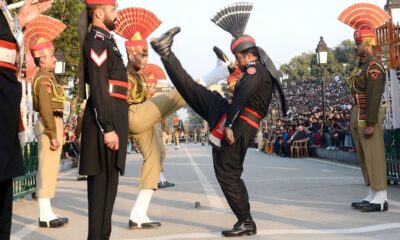Asia
Afghanistan and Iran display political maturity to end border-dispute
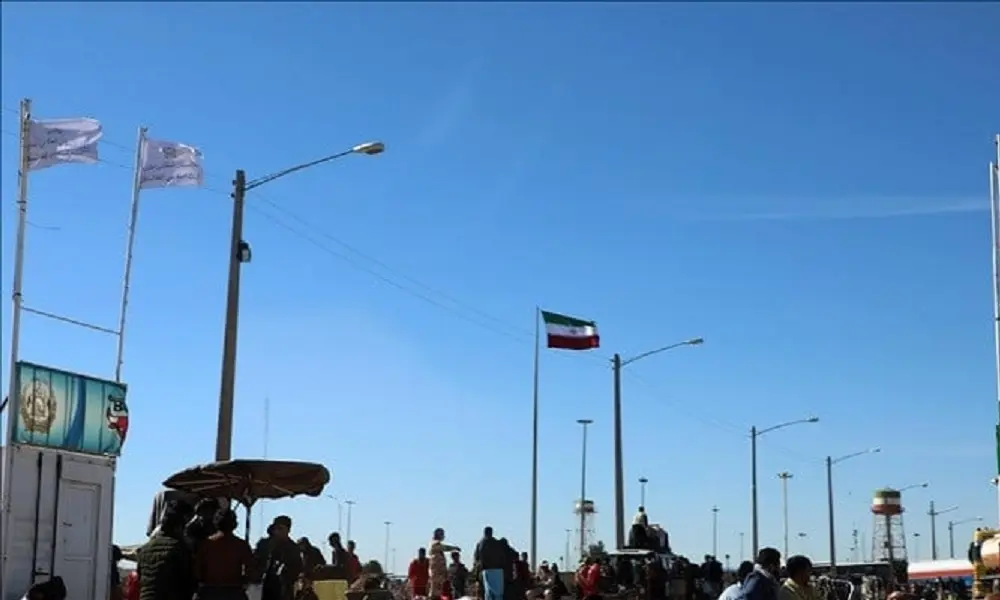
Afghanistan and Iran have been able to immediately put a full stop to the recent border skirmishes and both sides called it a mistake while Tehran says it was a “brief conflict”.
Three days ago, the security forces of Afghanistan and Iran embroiled in a new clash, marked by the exchange of gunfire and military tension that also left several people dead and injured.
The clashes that underlie an age-old issue of waters on Afghanistan’s Helmand River, claimed the lives of two Iranian border guards and one Taliban forces.
The Helmand River is Afghanistan’s largest river that provides Iran with 22 cubic meters of water per second under a 1973 agreement. However, the flow of water has dropped significantly and Taliban blame drought and climate change as the key reason. Taliban said they are committed to the water treaty with Iran but says they are also scrambling with water shortages.
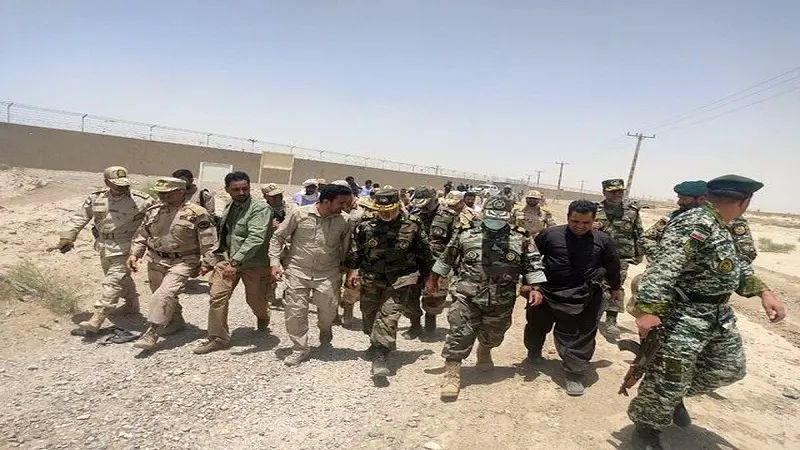
The Commander of the Ground Forces of Iran and other officials visited the Sistan Region of South-Eastern Iran to investigate the field conditions of the Iran-Afghanistan border areas. (Iran Press)
However, Iran sees the situation from a different perspective and blames Afghanistan’s dam construction for exacerbating drought conditions in both sides of the neighboring countries.
Iran, in particular, is not happy with a Kajak dam built on the Helmand River that has altered the river’s course and prevented water from reaching Iran.
Political maturity
Whatever might be claimed and visible positions as some certain external circles already started jubilating on the border dispute between Afghanistan and Iran, the two neighboring countries exhibited immense adulthood to overcome the quarrel.
Taliban and Iranian officials immediately restrained from releasing infuriating statements, and both sides pledged to stop repeating the same mistake.
Iran’s Interior Minister, Ahmad Vahidi has described clashes on the border as a “brief conflict” and said the problem has been resolved after negotiations with the Taliban.
Vahidi tried well to downplay the severity of the clash, and stated that currently there is no problem and the border is open and in peace.
But he blamed the Afghan border guards for starting the battle, and said they were given an appropriate response.
The Taliban also said that they want to have good ties with Iran, adding the border clashes was a mistake. Taliban’s spokesman Bilal Karimi said that Islamic Emirate does not want tensions with anyone, including its neighbors, and called the border fighting a “small dispute”.
“We are in contact with Iranian officials and if there is any issue we will resolve it collectively,” Karimi added.
No proxies at all
It is important that Iran and Afghanistan should pay extreme attention to issues such as recent border conflict that should not lead to a proxy war between the neighboring countries.
“Taliban and Iranian officials have shown the courage to resolve the border dispute without harming their ties, and this is a great development on relations between the two countries,” said a political expert.
Speaking to Harici, Jamil Hadiri said that every dispute between Kabul and Tehran should be resolved through dialogues and diplomatic approach before the enemies use the opportunity against both of them.
“It was a big mistake to see direct clashes between security forces of the two countries, but at the same time, it was great to see the ability and willingness from the two sides in resolving the quarrel in just a day,” Hadiri said.
Many clashes erupted between Afghanistan and Iran
Since August 2021 when the Islamic Emirate swept into power, there have been many clashes with Iran, but the recent one was deadly.
Taliban and Iranian border guards fought five times in the past 21 months and the first clash was on December 1, 2021, in Shaghalak area in Nimroz province. Officials from both sides confirmed the clash and said it erupted due to “misunderstandings” between the border guards of the two countries. No casualties reported from the incident.
On April 21, 2022, clashes erupted again between Taliban and Iranian security forces near the Islam Qala border. The third time was on July 23, 2022, and the clashes took place near Hirmand border town.
In February 2023, another clash took place and the recent one was on Saturday, May 27, when the border guards of the sides engaged in deadly fighting in Pul-e-Abrisham border crossing in Nimroz province, west of Afghanistan.
Drought is another headache
Drought and climate change have been one of the biggest drivers of conflict between Afghanistan and Iran.
Iran has been scrambling with drought in the last 30 years and as a last resort, warned Afghan leaders to unlock the flow of water to Iran, or face some serious action.
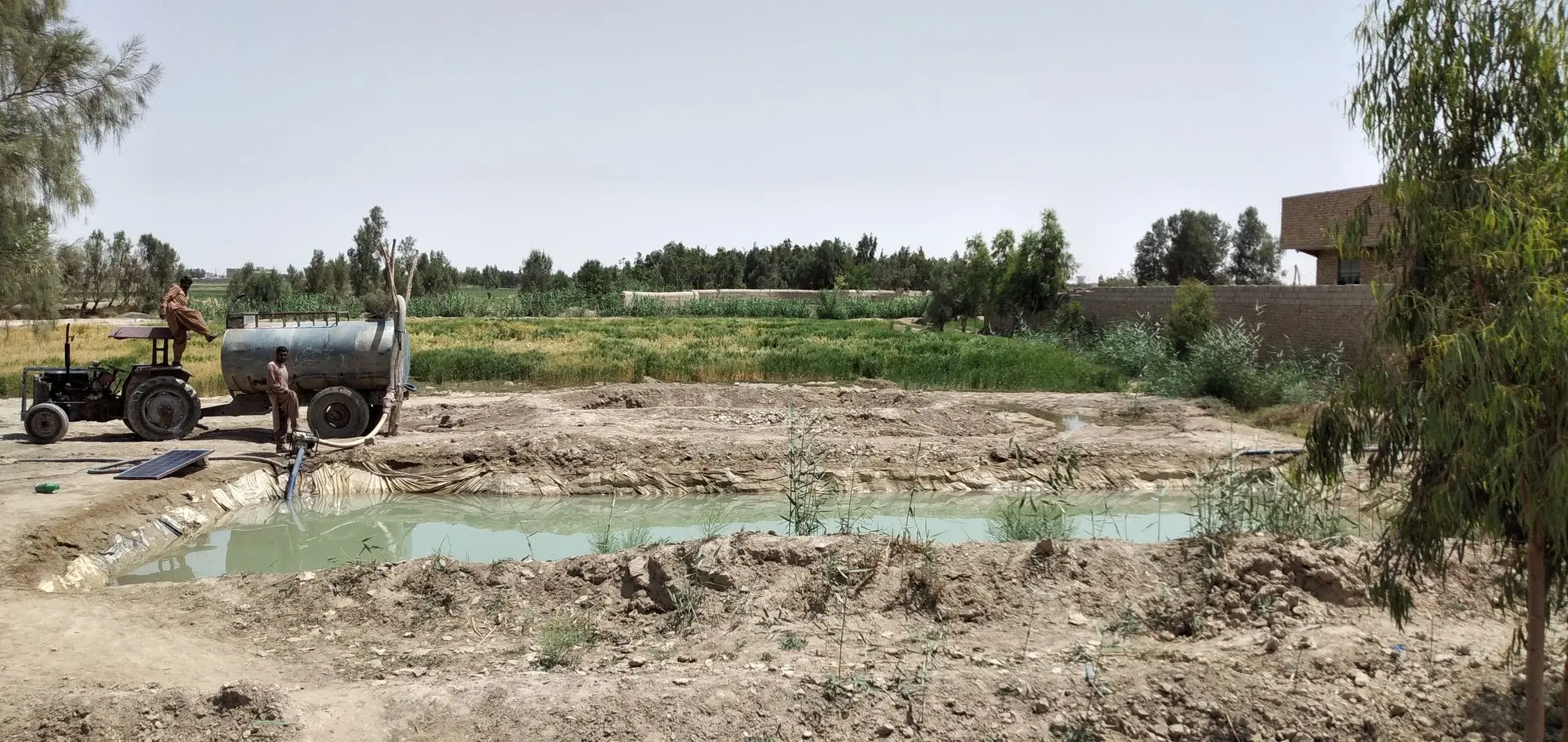
Nimroz residents have been suffering from water shortage since last five years.
The Taliban treated the warning as a wake-up call and wanted swift responses to Iran authorities with military action in case of any attacks.
Taliban leadership time and again says drought is hitting harder areas bordering Iran, especially Nimroz province.
Some residents in Nimroz told Harici that dozens of families were forced to leave their homes and migrated to other places even to other provinces due to drought and non-availability of water.
We have been facing drought in the last five years, said Syiar Khan, a resident of Nimroz province. Speaking to Harici, he said that he lives in the Nad Ali area but other relatives of his, including his older brother, migrated to Kabul due to lack of water. “We are farmers, and water is our basic need. I have lost all of my income in the last five years and I am also considering leaving Zaranj city to another province,” Khan added.
“We purchase one tanker of potable water against 400Afs, and this is very costly at a time when the economy is very bad,” said another resident Amir Gul.
Gul called on the Taliban leadership to help remove water shortages in the province through any possible way and release water from Kajaki dam if necessary.
Asia
Japan diverges from G7, urging restraint in Israel-Iran conflict
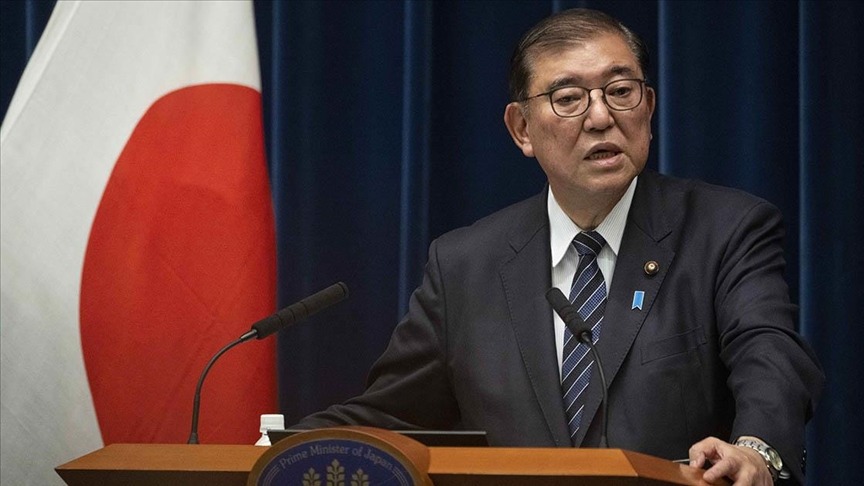
Japanese Prime Minister Shigeru Ishiba has affirmed Tokyo’s position of calling for “maximum restraint” from both Israel and Iran, despite a G7 statement earlier this week that supported Israel’s “right to self-defense.”
During a meeting of ruling and opposition party leaders on Thursday, Ishiba stated, “What the foreign minister said is the stance of the Japanese government. The G7 is the G7,” as reported by Tomoko Tamura, head of the Japanese Communist Party.
Japan, a close US ally in Asia, has long maintained friendly relations with Iran and has historically adopted a neutral approach to Middle East diplomacy, distinguishing itself from the pro-Israel stance of US administrations. Tokyo relies on the Middle East for the overwhelming majority of its crude oil imports.
G7 leaders convened in Kananaskis, Canada, and issued a statement backing Israel’s attacks on Iran. The statement affirmed Israel’s right to self-defense and condemned Iran as the “main source of regional instability and terrorism.” On June 13, when Israel’s attacks on Iran began, Japanese Foreign Minister Takeshi Iwaya declared: “The use of military force while diplomatic efforts are ongoing… is completely unacceptable and a source of deep regret. The Japanese government strongly condemns these actions.”
Iwaya added, “Japan is gravely concerned about the continuation of retaliatory attacks and strongly condemns any actions that could further escalate the situation.”
He continued, “Japan urges all parties to exercise maximum restraint and strongly calls for a de-escalation of tensions.”
During the meeting of party leaders, Tomoko Tamura, head of the Japanese Communist Party, highlighted the apparent contradiction between Iwaya’s statements and the joint G7 communiqué, suggesting the government was applying a “double standard.”
Prime Minister Ishiba responded, “What the foreign minister said is the stance of the Japanese government. The G7 is the G7.”
Meanwhile, the foreign minister announced at a press conference on Friday that a total of 87 Japanese nationals and their family members had been evacuated by land from Iran and Israel. Sixty-six individuals were evacuated from Iran to neighboring Azerbaijan, and 21 were evacuated from Israel to Jordan.
Following additional requests from Japanese citizens, a second land evacuation from Iran is scheduled for Saturday. Currently, there are approximately 220 Japanese nationals in Iran and about 1,000 in Israel.
In preparation for potential air evacuations, the government plans to dispatch two Air Self-Defense Force military transport aircraft to Djibouti in East Africa to have them on standby. With airports in Iran and Israel closed, Iwaya noted that the aircraft could be used if, for example, the airports reopen and conditions permit an airlift.
Asia
Iran-Israel war: Why US discusses regional conflict with Pakistan
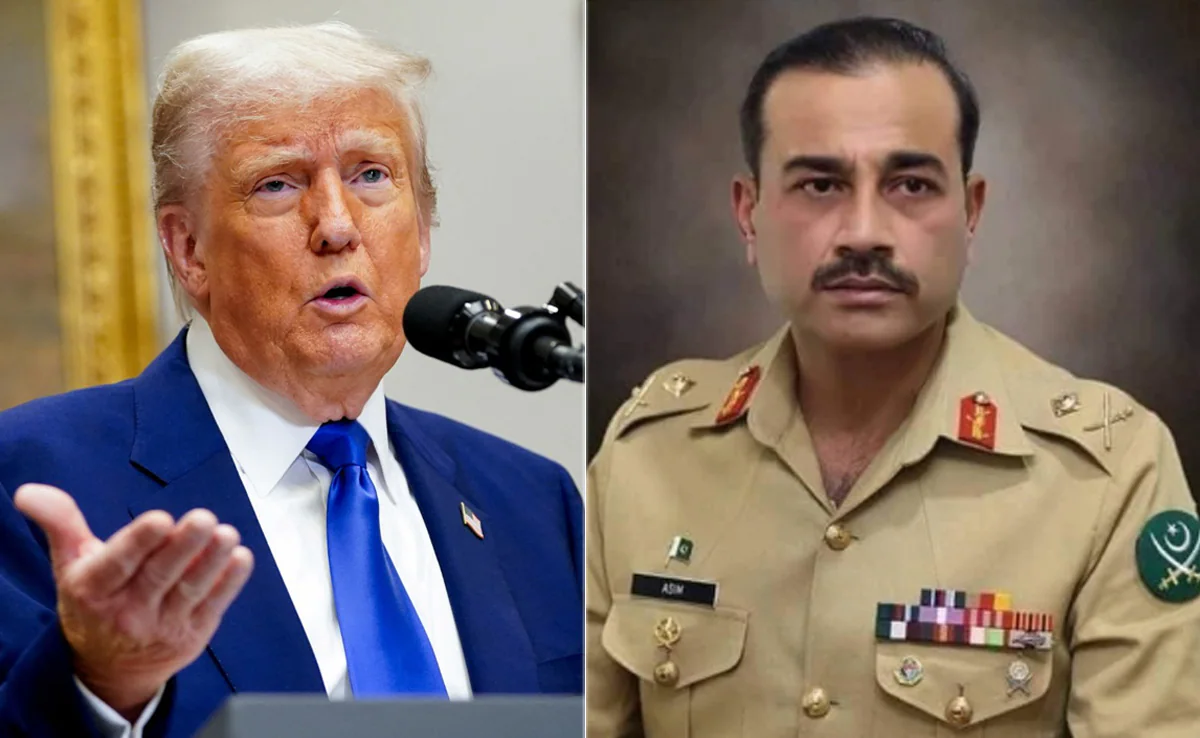
US President Donald Trump and Pakistan’s Army Chief General Asim Munir held a special and important meeting during a time when tensions are rising in the Asian region. The meeting was held on Trump’s invitation and was not open to the media. However, both sides have released official statements afterward, which states that the main topics were discussed
The meeting focused on the ongoing conflict between Iran and Israel, Pakistan–India relations, especially the Kashmir issue, the situation in Afghanistan and future US–Pakistan cooperation.
Pakistan has recently improved its strategic position in the region. It has shown strong ties with China and is the only South Asian country openly supporting Iran in its conflict with Israel. Meanwhile, Pakistan remains an important player in Afghanistan.
Why the Pakistani Army Chief was invited to the US?
Although Pakistan has an elected civilian government, important decisions—especially related to foreign affairs and security—are often handled by the military. That’s why General Asim Munir was invited to meet Trump instead of the Prime Minister, General Munir’s influence has grown recently. After tensions with India, he was given the title of Field Marshal. His meeting with Trump is seen as a sign of his importance in both Pakistani and international politics.
According to the Pakistan Army’s media wing (ISPR): General Munir thanked President Trump for helping to ease recent tensions between Pakistan and India. Trump praised Pakistan’s role in fighting terrorism. Both agreed to work together in the future, especially in: Trade, Technology Minerals and energy Artificial intelligence Crypto currency and regional peace efforts as well.
President Trump also appreciated General Munir’s leadership during difficult times. Munir invited Trump to visit Pakistan, and Trump reportedly accepted the offer in principle.
Why US former peace envoy to Afghanistan, Khalilzad is not trusting Pakistan’s army chief
Former U.S. diplomat Zalmay Khalilzad criticized the meeting. He said General Munir cannot be trusted and reminded the U.S. that Pakistan has supported groups that harmed American soldiers in the past. According to Khalilzad, General Munir may be trying to get U.S. support for his interests in Afghanistan, which he believes could be risky for America.
Though no official list of US demands was made public, reports suggest a meeting was held in Saudi Arabia earlier, where American officials spoke with top Pakistani leaders. During that meeting, the U.S. reportedly made four key requests: Pakistan should help the U.S. in counterterrorism operations when needed. Pakistan should slowly reduce its relations with China. Pakistan should recognize Israel after Saudi Arabia does. If the U.S. attacks Iran, Pakistan should support the U.S. instead of staying neutral.
These demands are similar to earlier U.S.–Pakistan arrangements during the Cold War and the War on Terror.
What could be expected in the future?
This meeting could mark the beginning of a new phase in US–Pakistan relations. In the past, Pakistan helped the U.S. during the Soviet-Afghan War and after 9/11. Now, with tensions involving Iran, India, and Afghanistan—and China expanding its role—the U.S. may again be looking to Pakistan as a key partner in the region.
Time will tell whether this leads to a long-term partnership or just another temporary agreement based on short-term goals.
Asia
China pledges aid and signs friendship treaty at Central Asia summit
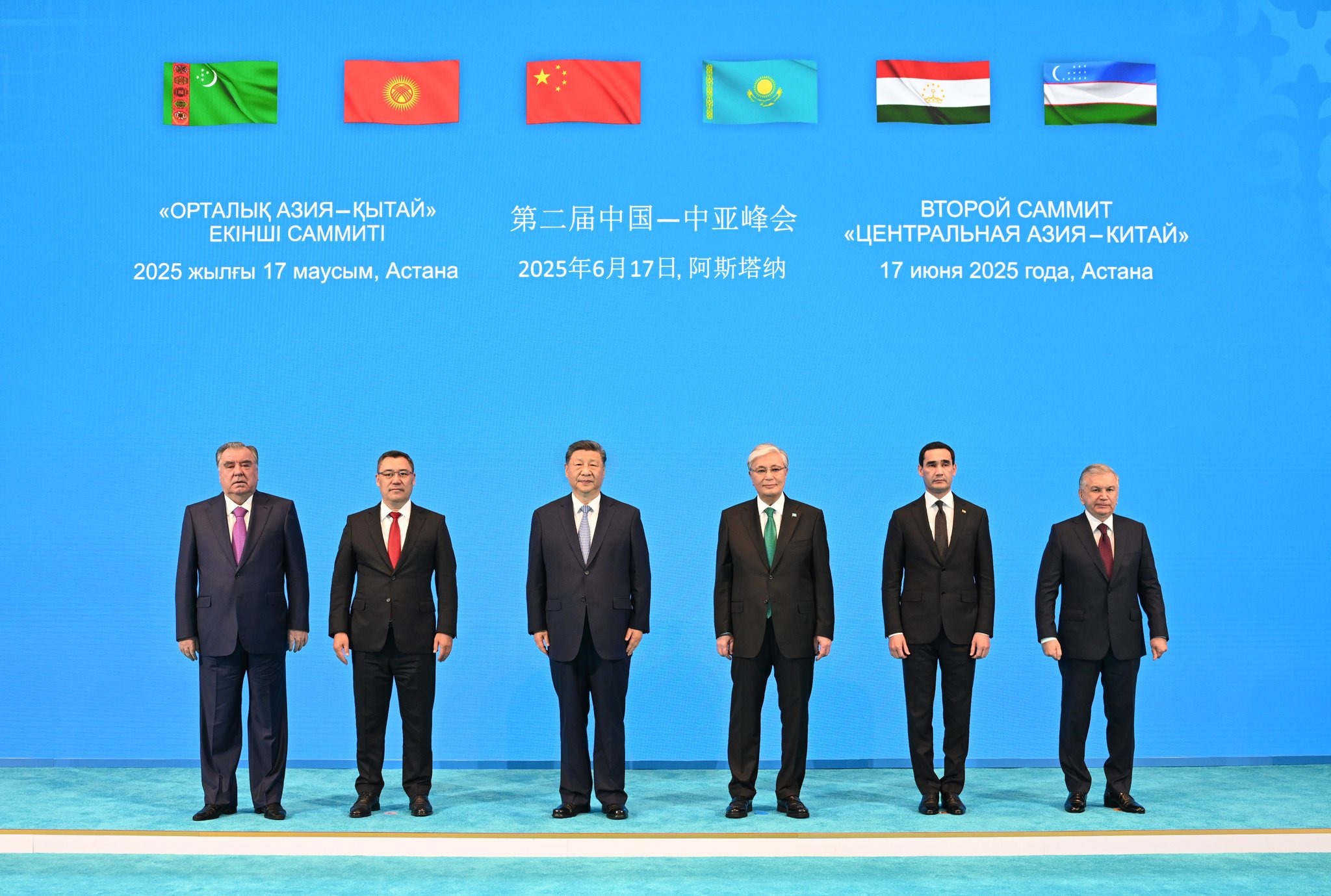
China concluded its latest engagement efforts in Central Asia on Tuesday by pledging 1.5 billion yuan (US$209 million) for livelihood and development projects in the region.
The six nations participating in the second China-Central Asia Summit also signed a historic permanent friendship treaty.
“China is ready to provide 1.5 billion yuan in grant assistance to Central Asian countries this year to support livelihood and development projects of common interest to each country,” Chinese President Xi Jinping stated in his opening address at the summit in Astana, the capital of Kazakhstan.
“Additionally, China will offer 3,000 training opportunities to Central Asian countries over the next two years.”
Xi described the signing of the Permanent Good-Neighborliness and Friendly Cooperation Agreement as a milestone in relations between the six countries, calling it “an innovative initiative in China’s neighborhood diplomacy and a contribution that will benefit future generations.”
China has signed similar agreements with Russia and Pakistan.
Xi also emphasized the need for cooperation in a world that has entered “a new period of turbulence and transformation.”
State news agency Xinhua quoted Xi as saying, “There will be no winner in a tariff and trade war. Protectionists and hegemonists will harm both others and themselves.”
“The world should not be divided, but united; humanity should not revert to the law of the jungle, but work to build a common future for mankind,” he added.
Xi also announced the establishment of three cooperation centers focusing on poverty reduction, educational exchange, and desertification control, as well as a trade facilitation platform under the China-Central Asia cooperation framework.
In a statement on Wednesday, the Chinese Foreign Ministry said that China and the Central Asian countries are eager to improve road and rail connectivity and plan to open more direct flights to and from China to increase mutual exchange.
China will consider simplifying visa procedures with the five Central Asian countries, while all parties will study the feasibility of opening consulates.
Together with Kazakhstan, Kyrgyzstan, and Tajikistan, China will accelerate the modernization of existing port facilities and assess the need for new ones.
The summit was the second of its kind, following the inaugural one held two years ago in Xian, China.
These efforts reflect a deepening of China’s relations with Central Asia, which have historically focused on areas such as transportation infrastructure.
The region is a key part of the Belt and Road Initiative, Beijing’s global development strategy, and China has invested heavily in energy pipelines, infrastructure, and mining projects in Central Asia.
However, China also wants to expand cooperation into sustainable development and renewable energy.
These investments were a major focus of Xi’s meetings with the leaders of the five Central Asian states.
During the meetings, Xi stressed the need to uphold multilateralism and the global trade order. This is part of Beijing’s effort to position itself as a more reliable partner following the US tariff war.
Meeting with Turkmen President Serdar Berdimuhamedov, Xi called for expanding gas cooperation and exploring opportunities in non-resource sectors.
Security was also on the agenda.
“The two countries should further strengthen law enforcement, security, and defense cooperation, jointly combat the ‘three forces,’ and enhance cooperation in cybersecurity,” Xi said, referring to “terrorism, separatism, and extremism.”
Beijing views these forces as threats to national and regional security, and Xi has repeatedly emphasized this stance in his meetings with Central Asian leaders.
While China’s presence in Central Asia has historically focused on economic investments, its influence in the security sphere is growing through joint counter-terrorism drills, training programs, and aid.
This is particularly true in Tajikistan, which shares a long border with Afghanistan, where China is concerned about terrorists returning to carry out operations in its western Xinjiang region.
In his meeting with Tajik President Emomali Rahmon, Xi called for deeper cooperation in law enforcement and security to combat the three forces.
He also called for increasing bilateral trade and investment and improving transportation infrastructure.
Rahmon said Dushanbe would expand cooperation in new areas such as new energy, green industries, and artificial intelligence, and would “strengthen coordination with Beijing for the Shanghai Cooperation Organisation (SCO) to play a greater role.”
The SCO is the main forum for relations between China and the landlocked region. This political, economic, and security bloc was founded in 2001 by China, Kazakhstan, Kyrgyzstan, Russia, Tajikistan, and Uzbekistan. Turkmenistan, reflecting its commitment to “permanent neutrality,” is the only Central Asian country outside the organization.
On Tuesday, Xi also held talks with Kyrgyz President Sadyr Japarov, describing relations between the two countries as being in “the best period in history.”
Xi said the construction of the China-Kyrgyzstan-Uzbekistan railway is a top priority, but new growth drivers such as clean energy, green mining, and artificial intelligence should also be developed.
The talks followed the signing of cooperation documents between China and the summit’s host country, Kazakhstan, covering trade, investment, technology, tourism, and customs.
Xi asked his Kazakh counterpart, Kassym-Jomart Tokayev, to accelerate cross-border railway projects and the improvement of port infrastructure.
Xi also stated, “Beijing and Astana should be strong supporters of each other in turbulent times.”
According to the Kazakh presidential office, Tokayev described relations between the two countries as stable and “not negatively affected by geopolitical challenges and turmoil or the international situation.”
-
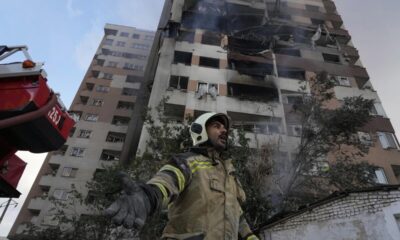
 Diplomacy1 week ago
Diplomacy1 week agoFormer diplomat warns forcing Iran out of the NPT is the greatest danger
-

 Middle East2 days ago
Middle East2 days agoUS to launch major bombing campaign against Iran this weekend, Hersh reports
-

 Opinion2 weeks ago
Opinion2 weeks agoEuropean defense autonomy and Germany’s military role enter a turning point
-

 Middle East1 week ago
Middle East1 week agoNetanyahu’s government survives no-confidence vote as Haredi crisis is delayed
-
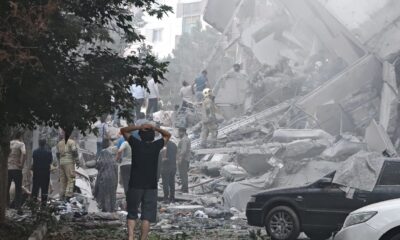
 Diplomacy1 week ago
Diplomacy1 week agoFormer CIA analyst says Israel used ceasefire talks as a trap
-
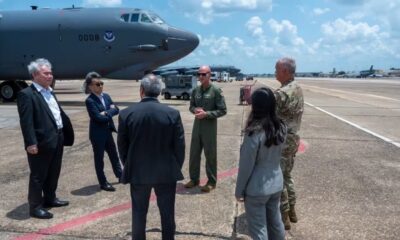
 Asia2 weeks ago
Asia2 weeks agoJapan, US showcase B-52 bombers in nuclear deterrence dialogue
-

 Middle East6 days ago
Middle East6 days agoIran targets Mossad and Unit 8200 in missile attack on Tel Aviv
-

 Middle East7 days ago
Middle East7 days agoIranian missile attack causes heavy damage across Israel






